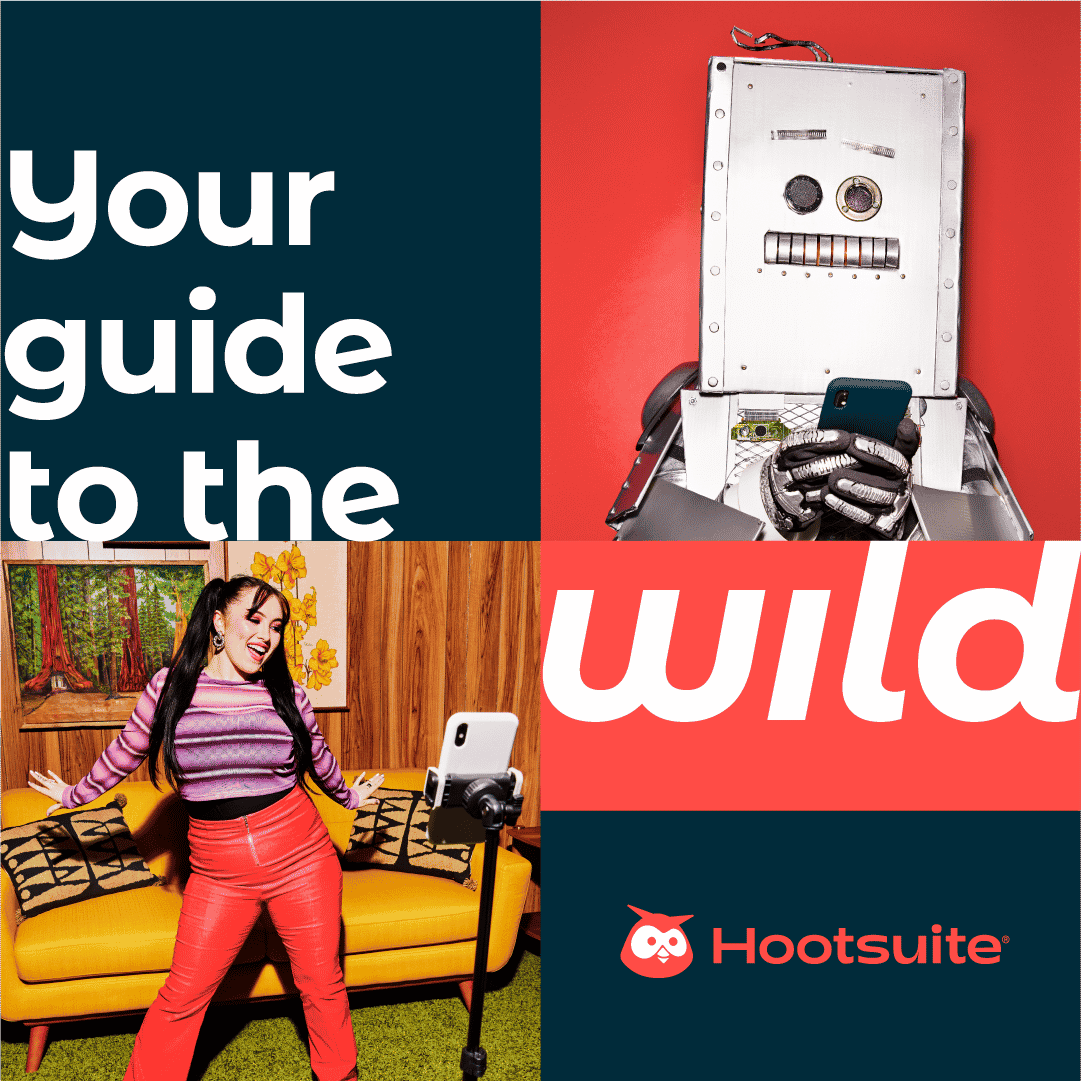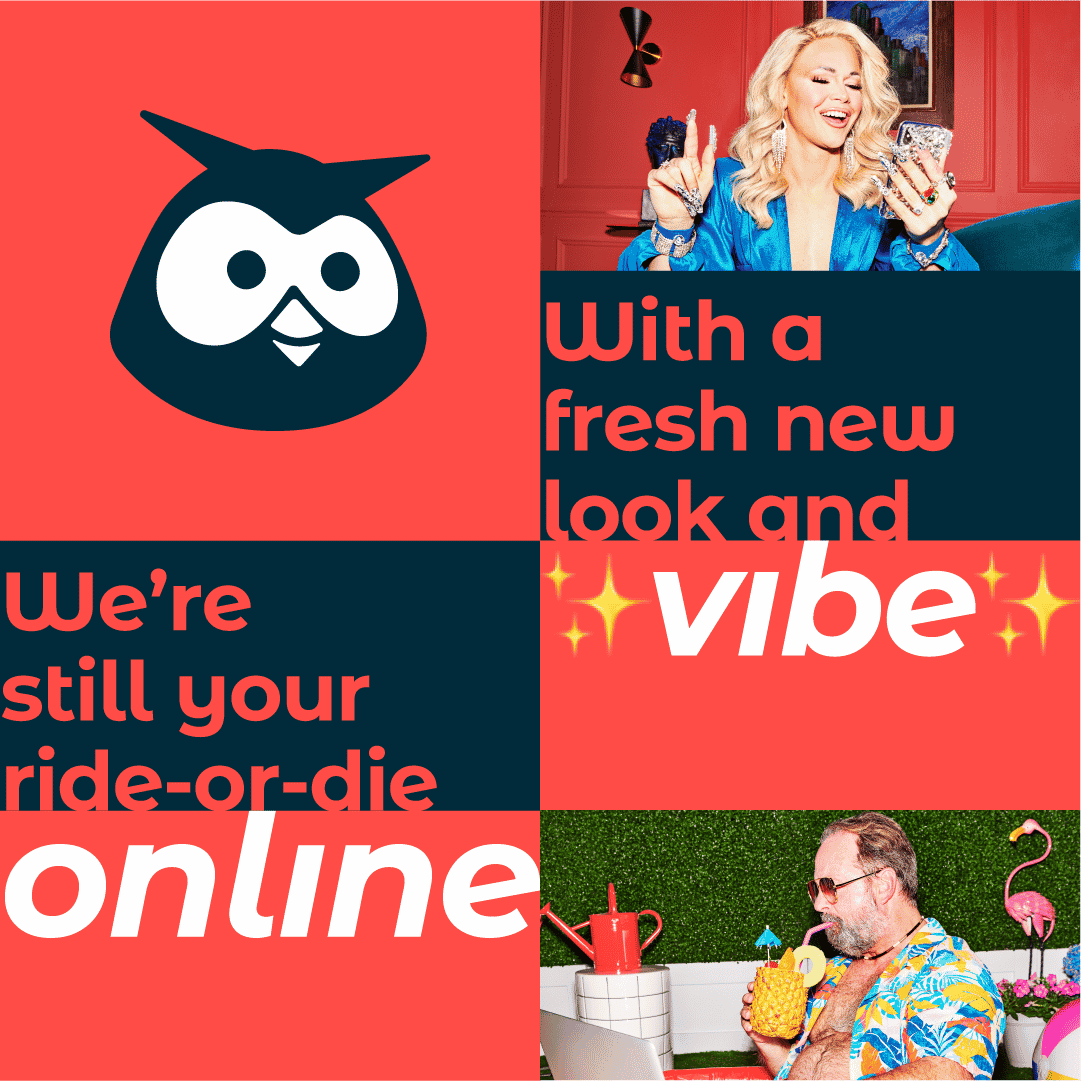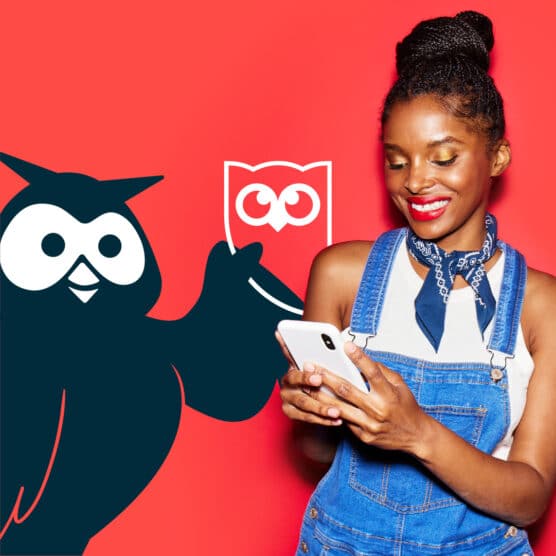So the cat owl’s out of the bag: We rebranded.
Owly got a serious makeover, we dialed our photography style up to 10, and we’re embracing our role as your guide to social. And all that strategy got us thinking about the relationship between social and brand identity.
Classic marketing wisdom used to say the brands we love earn our trust with an amazing product experience and consistent, emotionally resonant messaging. That’s why people pick Coke over Pepsi, and Costco die-hards (like me) keep following the siren song of the $1.50 hot dog combo.
But while a high-quality product and brand purpose are important as ever, the old-school notion that a brand’s tone and delivery should be the same everywhere is crumbling fast.
That’s a good thing—and it’s entirely because of social media.
In fact, social has driven a total evolution of what brands actually are and how they should be expressed. Most brands don’t sound or look the same everywhere, because they adapt their core brand story to fit each space they join on social. (We call that being a content chameleon.)
Social-first brands like us are taking it one step further. We’re infusing the authentic voice and style we’ve created on social back into every other part of our brand. Think landing pages, sales decks, billboards, and even customer support.
Right now, we’re making our big move towards the future of branding, and you’re just in time to ride the wave with us. Let’s explore what this looks like.
Brand values must be rock-solid—everything else is flexible
Every marketer knows what Brand (with a capital B) is, but the term is tough to explain. (Kind of like the word “the” or the plot of Everything Everywhere All At Once.) Ask three marketers and you’ll get three different explanations, all of which will probably be true.
In short: Brands help consumers differentiate between competing products, and make choosing the right one easier.
Brands are defined by tangible assets like colors, logos, mascots, fonts, and taglines, and intangible assets, like their values, purpose, associations, and relationship with customers.
Nike’s got their swoosh, the “Just Do It” tagline and athlete ambassadors like Michael Jordan and Serena Williams. Old Spice has their signature shade of red, the “smell like a man” tagline, the whistle jingle, and lovable hunks like Terry Crews and Isaiah Mustafa. And at Hootsuite, we’ve got our mascot Owly, our colorful visual style, and our “your guide to the wild” brand identity.

All these tangible assets help make brands salient—or distinct.
That means that when people think of your product category, they think of your brand. But while being well-known is good, it doesn’t always ensure growth.
That’s why intangible assets like your brand’s purpose, story and values are just as (if not more) important than what your brand looks like. You’ll remember an ad that makes you feel feelings longer than any font or brand color, and those emotional ties are what actually set your brand apart.
That’s crucial, because being seen as different is the most important factor for long-term brand returns.

Your voice and look can (and in our opinion, should) bend, stretch, and warp to fit into each space you occupy. No matter how you make your brand story shine, if you live up to your core values, you’re golden.
Social forces brands to be adaptable (and we love to see it)
Nobody is on social to get blasted with ads. People are there to kill time, be entertained, and stare at the main character of the day. Marketers like us are interrupting those experiences, so our job is making those interruptions… not completely horrible.
In other words: your competition on social isn’t just your actual competition—it’s everything around you in the feed. If your content is boring, offensive, or sticks out like a sore thumb, you’re gonna have a bad time.
People will ratio you, ignore you, or hurt your feelings.
As a result, many brands sound different on social than they do in print, PR, paid media, or on their websites. The core brand purpose stays the same, but the vibe changes.
Social media isn’t a monolith; it’s a collection of different spaces, each with their own in-jokes and norms. LinkedIn is an office party with all your colleagues. TikTok is a talent show, a comedy club, and a therapy session all on one stage. And Twitter is a group of raccoons fighting behind an Arby’s. (In other words, it’s awesome.)
You wouldn’t talk or act the same in all those different situations, and your brand shouldn’t either.
Start by shifting your brand’s voice, tone, and style for social in general and then to each individual different social network. This isn’t just smart, it’s completely normal.
You’re still you, you’re just reading the room.
Above all else: speak in plain, clear language.
Make sure your brand sounds human. Be conversational—whether that’s the energy of a serious convo or a group chat with your BFFs. And trust your judgment as a social marketer.
These rules cover restricted industries like finance, as well as industries with more room to experiment.
The Bank of America shouldn’t tweet “looks like there’s gonna be a heckin chonker of a recession lmao,” but they should post simple tips that make their complex field accessible to everyone. (Too much crypto-corporate-market-synergy-disruption jargon makes us normal people pass out.)
But industries like cosmetics, food, and marketing are more loosey-goosey.
If you’ve got the freedom, turn up the heat. Experiment with language. Forget your marketing degree and crank out some dank, industry-related memes. Do something that makes you smile. Chances are you’ll make someone else crack a grin, too.
The TL;DR: So long as your social voice reflects your brand’s core values and mission, you’ll remind people of those intangible, deep-rooted reasons they like you.
That’s what wins.
To fit in everywhere, be a content chameleon
Many top brands are content chameleons.
They modulate their voice and tone to blend in organically across social. Their posts match the mood and energy on each channel, so they join the conservation, instead of disrupting it.
This might mean being dressed up for LinkedIn, cheeky and opinionated on Twitter, and down-to-earth on TikTok. Or it might mean being education-focused and helpful everywhere. There’s no formula, and you’ve got to discover what works best for your brand through trial and error.
Looking for a chameleonic brand in action?
Wendy’s shows how a brand can modulate its voice to look and feel at home on any marketing channel. The fast food giant is well-known for its irreverent Twitter presence, which oscillates between cheekiness and flat-out combativeness. (Like most Twitter users, let’s be honest.)
Wendy’s keeps the cheeky tone on Instagram, but they change content formats. IG is all about visuals, so they borrow the look of an Instagram meme page, where they post screenshots of tweets, serve up dank memes, and slyly promote their food along the way.
In print, Wendy’s isn’t quite as snarky or confrontational as on social.
This coupon flier just showed up in my mailbox, and the message is straightforward: “We have breakfast—and you want to eat it.” (They were right, tbh.)

And when Wendy’s needs to turn up the heat IRL, they’re never above showcasing their best roasts of McDonald’s from Twitter on a massive Times Square billboard.
The voice can modulate, but the brand at the heart of it is strong. Each ad reminds you that Wendy’s exists, that their food is fresh and tasty, and that they’re fun. That never changes.
Hot (but justified) take: Once you’ve established a social voice and look that feels true to your brand, go one step further and make it the core of your brand.
This strategy is called social-first branding.
When you think about it, social-first branding makes perfect sense. Brand is the intersection of what matters to people and what matters to you. Social media is where everyone spends their free time and the best place to discover what your customers care about.
You’ve got all this brand research at your fingertips, so why not use it?
Creating a social-first brand starts with chopping and pruning. Go into your website, your white papers, your product, and your out-of-of-home advertising. Cut down anything long and wordy so it’s bite-sized and punchy. Ditch all the excess, and keep the meaning. (In general, this is also good copywriting advice.)
Our pals at SurveyMonkey have done a great job of this.
In the mid-2000s, their landing page was a blocky wall of text. They led with this awkwardly-worded pitch: “Intelligent survey software for serious primates of all species.” The text was tiny and hard to read—and there were almost no pictures.

Fast forward nearly two decades. SurveyMonkey cut everything down. Now, their website is sleek and simple. They define themselves as “a global leader in survey software.” Short, sweet and to-the-point. Plus, they even use different survey questions for their hero text to show their product in action.
That’s social-first in a nutshell. Kudos, Team SurveyMonkey.

After simplicity, the next step in social-first branding is injecting your brand’s social personality into things that live a little further away from the timeline.
There’s no formula for authenticity. You could be cheeky, folksy, sarcastic, and sassy, or brave, truth-telling, and combative, depending on what your brand stands for. Some brands’ personalities are cultured and artsy—while others are confessional and vulnerable.
Showing your personality gives you space to tap into popular modes of communication off social, too. This isn’t just for kicks: Brands with high cultural relevance grow nearly 6x faster than brands with low levels of relevance.
Bringing your social voice back into other touchpoints extends that feeling of cultural relevance one step further. This way, you won’t break the spell you cast on social with a glum-looking landing page or a brain-melting white paper.
When we’re looking for social-first inspo, we look to the team at Oatly. Their voice is a mix of climate activism and cheeky profanity, and we love it.
Oatly’s Department of Distraction Services (yes, that’s what it’s actually called) blogs about whether the English think oat milk tastes like “Satan’s diarrhea.” Their legal team led a petition to Germany’s Bundestag to display CO2 emissions on food labels. Plus, Oatly’s homepage is just a collage of all the cool projects they’ve got on the go.
And let’s not even get started on their brilliant product design. “Another side of our packaging providing no reason why you should try this product” is social-first branding at its finest. It’s silly, human, and oh, so authentic. To whoever wrote this: shine on, you absolute legend.

At Hootsuite, we just did a social-first rebrand (and we’ve never felt better)
Practicing what you preach is important. And in 2022, we threw out our old positioning to create a social-first vision of our brand.
Marketers and businesses choose Hootsuite because our tools and leadership help you stand out in the chaos online. Thinking about that, we realized who we’d been all along: your guide to the wild. (That’s our new tagline, btw.)

New imagery came next.
Too many tech brands look like the same dreary suburb in Corporate Memphis, and we knew that wasn’t us anymore. DMB photographer Amy Lombard came in clutch here. We teamed up with her (and her motley crew!) to create a library of wild imagery and video that mirrors the chaos of the social media feed.
Our look everywhere is about to feel more vibrant and social. Not just on Twitter and TikTok, but in our Social Trends reports, sales materials, and blog articles, too.
That means images of bedazzled office workers, spiky-haired punks, preppy chihuahuas, dads firing off tweets from backyard pools, and drag superstar Blair St. Clair—plus our brand new Owly.

Our brand voice evolved, too.
Going forward, we’ll continue dialing up the wild guidance, poking even more fun at marketing cliches, and saying the quiet parts out loud. Not just on social, but everywhere our brand appears.
In the near future, the most competitive brands will shift towards social-first marketing. Other brands have already realized this too, like our friends at Oatly, Spotify, and Depop. You’re not too late to join the party, either. It’s just getting started.
Ready to get weirder and wilder on social? Try Hootsuite free for 30 days. (Owly’s treat.)







